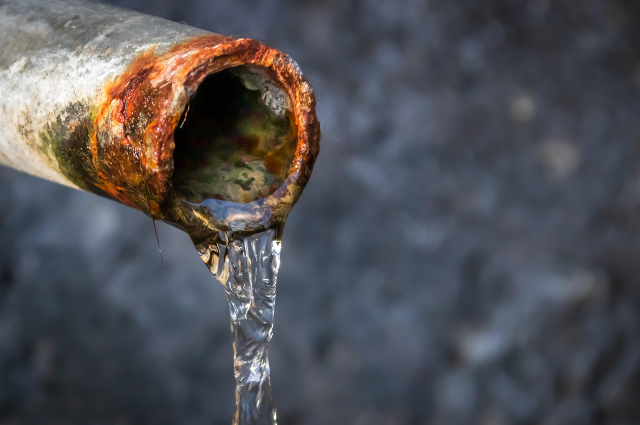
The Flint water crisis was a stark reminder of the fact that technical errors, together with systemic errors in government, can produce a catastrophic public health crisis. Essentially, it was not a natural disaster but an artificial catastrophe that evolved through a chain of preventable engineering and chemical errors. It was economical, but failure to use fundamental engineering protection measures created an economic measure into an epidemiological disaster that neither placed tens of thousands of individuals in contact with lead and other contaminants nor kept them safe.
The largest engineering blunder in Flint was the failure to include corrosion control treatment. When the city changed its water source from treated Lake Huron water provided by the Detroit Water and Sewerage Department (DWSD) to the Flint River on April 25, 2014, the new water was not treated to neutralise its corrosiveness. It was a disaster.
The water in the Flint River was previously discovered to be chemically very different from water in Lake Huron; it was more chloridic in type and 19 times more corrosive in character. Corroding along on its way through the city's aged distribution system, it broke down the protective coating of "patina" scale that had been accumulating over generations of service in lead pipes and brass fixtures containing lead. Losing this protective coating, water started seeping lead directly out of the pipes into the drinking supply. This was so corrosive that lead in some homes averaged more than 1,000 parts per billion (ppb), dozens of times above the EPA's 15 ppb action level. The issue was also compounded by the city's ancient and massive distribution system, much of which was constructed before the prohibition of the use of lead in service lines and pipes. A Predictable and Preventable Disaster???? The crisis was not the result of some mysterious scientific event. The danger was predicted and continually waved away. Corrosion control is a routine conservative practice in water treatment engineering, commonly attained by dosing with orthophosphate, creating a protective layer on pipes. The prevention would have cost the city but an imperceptible $140 a day, a small price compared to the ultimate human and economic cost of the crisis. There were warnings on several levels.
Mike Glasgow, a plant supervisor at Flint, penned a letter to state authorities stating that he would not be recommending it be done so early. Individuals complained of the odour, appearance, and taste of water and had skin issues weeks following the switch.
In an in-the-field theatre experiment, a General Motors engine plant ceased using Flint water in October 2014 because the water was corroding engine components. That was no-ego, fact-of-life evidence of the corrosive nature of the water that was ignored by government regulators. Cascading System Failures???? Engine failure precipitated a series of other public health risks. Bacterial contamination, such as E. coli that was found during the summer of 2014, chemically chlorinated the city's water. The corrosive condition of the water, however, degraded the chlorine so it was ineffective.
In addition, the chlorine reacted with the organic material in the river water to form high levels of trihalomethanes (TTHMs), which are toxic disinfection byproducts that destroyed the Safe Drinking Water Act.
System failure also created an environment for biological dangers. Government officials blamed corrosive water for a 2014-2015 outbreak of Legionnaires' disease, or pneumonia, in Genesee County. The deadly outbreak that killed 12 and infected at least 87 other individuals was traced to a drop in the level of chlorine in the water supply from corrosion of the iron, which provided a breeding ground for the Legionella bacteria. A Legacy of Distrust and the Road to Recovery. The solution was technologically simple once the decision had been made: on Oct. 16, 2015, the city switched back to the Detroit system and started introducing corrosion inhibitors with phosphate into the water. But too late. The physical plant—the pipes themselves—was irreparably harmed. Although the reconnect was finished, the pipes that had been badly corroded still leaked lead and other metals, and thus, the water was not safe right away. The long-term engineering remedy has been an enormous, expensive replacement effort of pipes. Since lead service line records were old or kept in 45,000 index cards, the city had the herculean task of excavating and testing nearly all of the service lines. More than 27,000 water service lines had been dug up as of July 2021, and in excess of 10,000 lead pipes had been replaced.
Despite what officials had promised on restoring the integrity of the water, there remains a long-standing and profound culture of distrust among citizens, many of whom continue to boycott drinking tap water.
The Flint debacle is a jarring reminder of the immense value of basic engineering adages. It implies that austerity measures to prevent going through a proven scientific procedure can prove to be catastrophic. It makes the point that clean drinking water is not a commodity but the product of an enormously complicated, well-tuned, and responsibly operated technological system.
The disaster uncovered inherent vulnerabilities in the nation-wide infrastructure and regulatory agency, laying bare that neglect in investing in and maintaining engineering integrity earlier or afterwards taints not only water but also the belief of people in their administration.
. . .
References:
